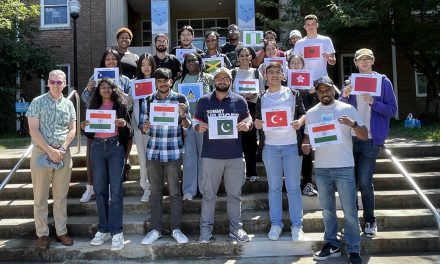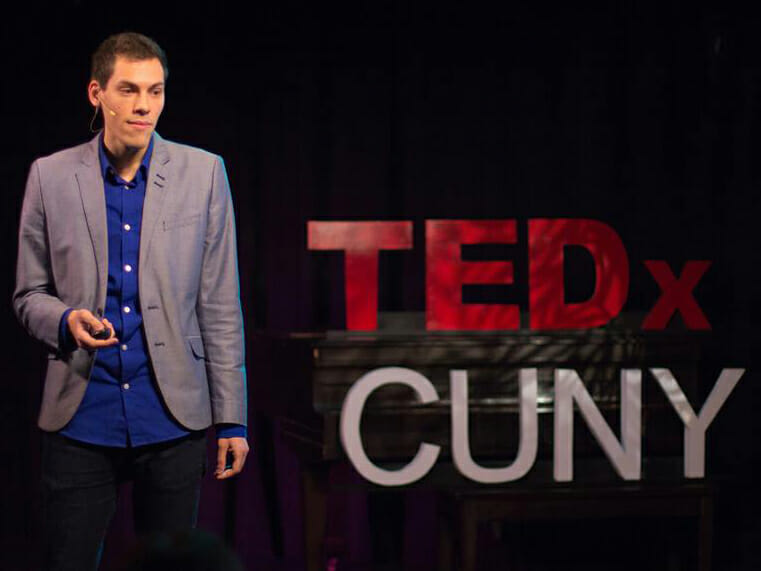Nestled between the never-sleeping bustle of Manhattan and the greener pastures of New Jersey it is easy to overlook Staten Island as a gateway borough for those wanting suburban living while still seeking the opportunities of the big city fortunes a half an hour away. Manhattan is known for its towering skyscrapers, Central Park, the Manhattan Project, and the Civil War Draft Riots; Brooklyn and Queens are known for their cultural diversity, civil rights activism, and the Battle of Brooklyn. The Bronx is famous for its home run hitters and ethnic cuisine. Staten Island has long been the misrepresented, lesser defined borough of New York City, but that will change.
The year 2011 will mark the 350th anniversary of the first permanent settlement on Staten Island, when Peter Stuyvesant, the Director General of New Amsterdam, granted a petition authorizing land grants to Dutch, French, and Belgian families.
SI350, a group of almost 100 volunteers, has been working on celebrating this historic event since 2008, planning on spreading the celebration out among 12 themes, one per month, in Staten Island history. The event will begin in January 2011 with the theme of “Transportation,” ending in December 2011 with “Religion.”
In conjunction with the anniversary, the College of Staten Island, along with Wagner College, St. John’s University, and SI350, Inc. has issued a “call for papers.” CSI has invited innovative proposals from scholars, curators, teachers, and public historians relating to Staten Island community history and education.
This “call for papers” will culminate with a symposium at the College of Staten Island on March 19-20, 2011 that, it is hoped, will “bring awareness to residents and visitors alike of the cultural and historical richness and diversity of the Staten Island community,” said Dr. Margaret Bérci, Associate Professor of Education at CSI and co-chair of the SI350 Academic Conference/Education Symposium. In addition, through a $10,000 matching grant, the Staten Island Foundation is funding a contest for New York City teachers. Three top prizes of $1,000 each will be allotted to create a teacher’s guide for one of the 350 sites of significance listed on the SI350 Website.
The conference committee includes historians and educators from many colleges, both four- and two-year colleges, locally and abroad: CSI, Wagner College, St. John’s University, Rutgers University, University of Toronto, College of New Jersey, and Union County College; the committee also includes a member of the staff of the NYPL. For symposium co-chair Dr. Phillip Papas, Associate Professor of History at Union County College and author of several books on Staten Island history, “The purpose is to rethink and to place emphasis on Staten Island in the history of NYC, the region, and the world and to make Staten Island’s integral connection to the rest of NYC irrefutable.”
Factors regarding CSI, such as it being the only public college in Staten Island; its diverse student body; its history of hosting past conferences, which showcased different issues of interest to the Staten Island community; and vast archives of important Staten Island politicians like John Marchi and Elizabeth Connolly housed within its Library, make it the perfect choice to host this major Staten Island event.
The panels for this conference will cover any and all topics with respect to Staten Island as a home of settlers and migrants from across the globe.
“It is important that we study the experiences and narratives of its residents, past and present. By doing so, we can come to a better understanding of Staten Island as a community–its character, fundamental values, and sense of self–and as an integral part of New York City, the United States, and the world,” said Dr. Bérci. “The stories of a community’s residents are its identity, and the residents of Staten Island have lived in history, experienced history, and in some cases, made history.”
Proposals for panels and/or individual papers must be emailed to Dr. Papas, Associate Professor of History, Union County College and co-chair of the SI350 Academic Conference/Education Symposium at papas@ucc.edu no later than October 15, 2010. For questions about the Teacher Guide to Staten Island Places competition, email Dr. Margaret Bérci at margaret.berci@csi.cuny.edu.
Visit the SI350 Website for complete details.
Some examples of SI’s regional, national, and global reach:
1. Colonel Robert G. Shaw, who commanded the 54th Massachusetts infantry regiment, an All-African American regiment during the Civil War, lived on SI with his family. The Shaws were vocal and nationally known advocates for the abolition of slavery in the United States. Colonel Shaw and the 54th were the subjects of the major motion picture Glory starring Matthew Broderick as Colonel Shaw.
2. Staten Island (specifically Port Richmond) was the birthplace of the 19th-century transportation (shipping and railroads) magnate Cornelius Vanderbilt.
3. Uranium for the Manhattan Project was stored in a warehouse near the Bayonne Bridge.
4. Staten Islander and Scotland native Bobby Thomson’s home run in the 1951 playoff series for the NY Giants against the Brooklyn Dodgers is one of the most iconic moments in U.S. sports history. It won the National League pennant for the Giants. This home run is famously called “the shot heard around the world” in baseball history.
5. SI shipyards employed many Norwegian and Irish immigrants and women during World War II, producing destroyers and other parts for U.S. naval forces.
6. Doctors at Sea View Hospital pioneered the cure for TB in the mid-1950s; it became the world’s leader in the treatment of TB.
7. Several victims (mostly young Jewish immigrant women) of the 1911 Triangle Shirtwaist Factory Fire in NYC are buried on SI at the United Hebrew Association Cemetery/Mount Richmond Cemetery.
8. SI was occupied longer than any other community in the U.S. by British forces during the American Revolution.
9. SI has always been a place of refuge, from the Huguenots of the 17th century to Loyalists during the American Revolution to Garibaldi in the 19th century to Liberian immigrants today.
10. The former Ernestina section of SI (now Mariners Harbor) was the site where Buffalo Bill’s Wild West Show would set up camp and practice for its NY/NJ area appearances. Buffalo Bill’s Wild West Show was sponsored on SI by Canadian native Erastus Wiman who invested in real estate and the railroads on SI.

















